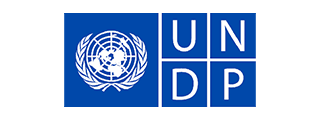Author: Farah Barakat
“There is no fight over just one issue, because we don’t live in just one issue,” said Audre Lord. And this is more relevant than ever with regard to the problem of climate change. An intersectional approach to climate action will chart a way forward that enables solidarity and agency across social categories.
People are different, in other words – people are very unique and constantly in motion: not only in terms of character, location, language, gender, race, class, sexual orientation, ability, age, but also in terms of different degrees of oppression and struggle, a gap intersectionality is trying to bridge. It emerged as a way of thinking to expose how social identities and systems of oppression intersect and multiply (Crenshaw, 1989) and emphasises that everyone has multiple characteristics.
Today, we are – thankfully – more aware than ever of the threat of climate change, in the media, in protests, in governments, in academia, and like any other important global issue, we should look at it through an intersectional lens. Indeed, intersectionality should not only be at the heart of climate change dialogue, but also shape how we intervene because, most importantly, “intersectionality can generate alternative knowledge that is crucial for formulating more effective and legitimate climate strategies” (Kaijser & Kronsell, 2014, p. 5).
The term “power” is directly related to the broader notion of power dynamics and their interaction: “intersections of power are found in all relationships at all levels, from institutional practices to individual actions” (Lykke, 2009). In the context of climate change, “it is widely acknowledged that the greenhouse gas emissions that trigger global warming are largely due to unsustainable lifestyles of the world’s wealthier minorities, especially in the so-called developed regions” (International-Energy-Agency, 2011). It is obvious that the same groups who are crushed by the burden of climate change are the ones who are not seen, not heard and not considered in these discussions, let alone in the process of decision-making about their lives and well-being in the prevailing climate agenda (Hemmati & Röhr, 2009).
An intersectional analysis of the climate change fiasco is able to shed light on these different forms of oppression, to assess these different renegotiations of struggle by contextualising different social and political categorisations that need to be brought into focus in order to confront the threats of climate change. An intersectional analysis will also chart a way forward that avoids the pitfalls of essentialisation and enables solidarity and agency across social categories (Kaijser & Kronsell, 2014).
In dialogue about climate change, especially in disadvantaged areas, many lives are often categorised, diverse experiences are put into boxes, and often there are many more realities that are not located anywhere, not documented, and not invited into the larger Western hegemonic discourse about them. Situated knowledge, indigenous knowledge or traditional ways of knowing are often left out, often oversimplified and always placed in the larger comparison between what is considered “legitimate data” and “untimely ways” of dealing with climate change. A key aim of intersectionality is to avoid this. There is a need to review and change the past. An overview of the power of institutions and how they can sometimes help to perpetuate the same inequalities is necessary in this struggle. Intersectional analyses of institutions can reveal how power structures are reflected materially, but also normatively in the reproduction of norms in the practices of political, economic and social institutions (Kaijser & Kronsell, 2014). This is because “political and societal institutions that regulate and create demands for transport, energy and consumption are particularly relevant. Such institutions both build on and take part in the construction and reinforcement of inequities and intersectional categorisations” (Kaijser & Kronsell, 2014, p. 427). There is an absolute need here to diversify the faces and histories of the people sitting at the decision-making tables.
The intersectional framework is able to do more than simply categorise lives and bodies. For example, feminist theorists have pointed to the need to create alliances based not on fixed identities but on shared interests and solidarity and the recognition of different positions (Chandra Talpade Mohanty, 2003). The intersectional lens will enable us to re-conceptualise and redefine new ways and systems of working in the face of climate change threats, challenging not only but also power structures and issues of legitimacy, and creating new systems that reduce injustice.
References:
Chandra Talpade Mohanty. (2003). “Under Western Eyes” Revisited: Feminist Solidarity through Anticapitalist Struggles. Signs: Journal of Women in Culture and Society, 28(2), 499-535. https://doi.org/10.1086/342914
Crenshaw, K. (1989). Demarginalizing the Intersection of Race and Sex: A Black Feminist Critique of Antidiscrimination Doctrine, Feminist Theory and Antiracist Politics. University of Chicago Legal Forum, 1989.
Hemmati, M., & Röhr, U. (2009, 2009/03/01). Engendering the climate-change negotiations: experiences, challenges, and steps forward. Gender & Development, 17(1), 19-32. https://doi.org/10.1080/13552070802696870
International-Energy-Agency. (2011). CO2 Emissions from Fuel Combustion 2011. https://doi.org/doi:https://doi.org/10.1787/co2_fuel-2011-en
Kaijser, A., & Kronsell, A. (2014, 2014/05/04). Climate change through the lens of intersectionality. Environmental Politics, 23(3), 417-433. https://doi.org/10.1080/09644016.2013.835203
Lykke, N. (2009). Non-innocent intersections of feminism and environmentalism. Women, Gender and Research, 18, 36 – 44.












